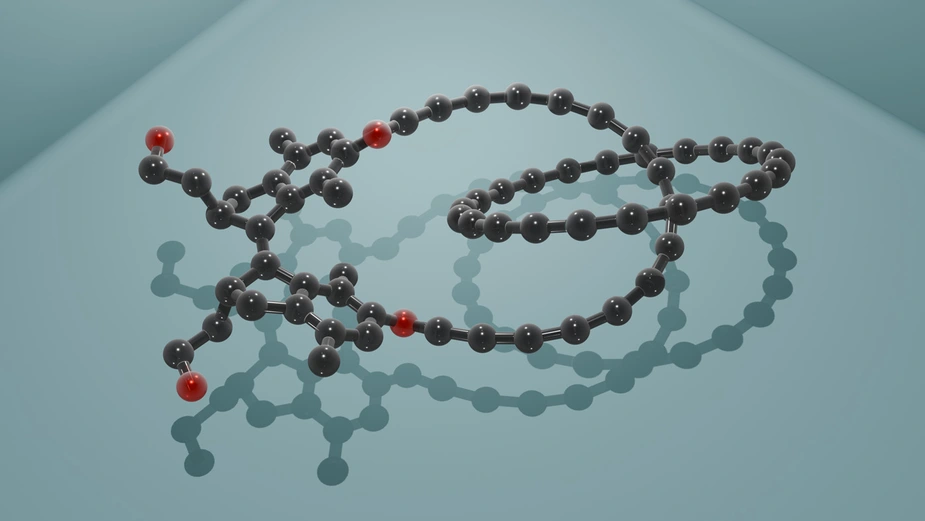New method for the mechanical formation of three-dimensional molecular structures
HU researchers develop light-powered nano-motor and use it to create ring-shaped, intertwined molecules
Threads or ropes can easily be used for braiding, knotting, and weaving. In chemistry, however, processing molecular strands in this way is an almost impossible task. This is because molecules are not only tiny, they are also constantly in motion and therefore cannot be easily touched, held or precisely shaped.
A research group at the Institute of Chemistry at Humboldt-Universität zu Berlin (HU) led by Dr Michael Kathan has now succeeded in precisely winding two molecular strands around each other using an artificial, light-driven molecular motor, thereby creating a particularly complex structure: a catenane (from Latin "catena" = chain). Catenanes consist of two ring-shaped molecules that are intertwined like the links of a chain – without being chemically bonded to each other. The research results were published in the renowned journal Science.
Nano motor brings a new kind of mechanical control to the world of molecules
“What we have developed is basically a mini-machine that is powered by light and rotates in one direction,” says Michael Kathan. “We use this controlled movement to mechanically wind two molecular strands around each other and connect them – regardless of whether they would do so on their own or not. Our motor now brings a kind of mechanical control to the world of molecules, which we previously only knew from the macroscopic world.”
New method can form a large variety of specific three-dimensional structures
In synthetic chemistry, it has previously been extremely difficult to intertwine molecules in a targeted manner, especially if this arrangement contradicts the natural process of molecular self-organisation. In nature, molecules are constantly in motion and can form three-dimensional structures in this process. Structural components of cells such as proteins or the genetic molecule DNA are assembled in this way. However, these are usually not fixed and permanent structures. In the laboratory, molecular templates have often been used to define specific structures, but they typically only work with certain molecules. The new method takes a different approach: the artificial molecular machine can force a wide variety of molecules into precisely defined three-dimensional structures. Driven by light, the rotating motor generates a mechanically defined twist with each step, which is then chemically fixed. The movement is directional and programmable. “Our method is the first template-free approach that allows such precise mechanical control, and it is also easily generalisable,” says Michael Kathan.
New possibilities for the design of innovative materials
The catenanes synthesised in the laboratory using the new method are considered the fundamental building blocks for mechanically intertwined structures such as molecular chains, fabrics or networks. The study shows for the first time that such structures can in principle be produced from very different molecules and thus provides a fundamental and generalisable conceptual approach: complex, mechanically defined architectures are technically feasible at the molecular level. This broadens the scope of chemical synthesis and opens the door to designing entire materials from mechanically intertwined molecules. These materials would possess unique properties: high flexibility combined with exceptional robustness due to their molecular architecture.
Article in Science research magazine
Contact:
Dr. Michael Kathan
Department of Chemistry of Humboldt-Universität zu Berlin
michael.peter.kathan(at)hu-berlin.de
www.kathanlab.de
HU press release, 31.07.2025
